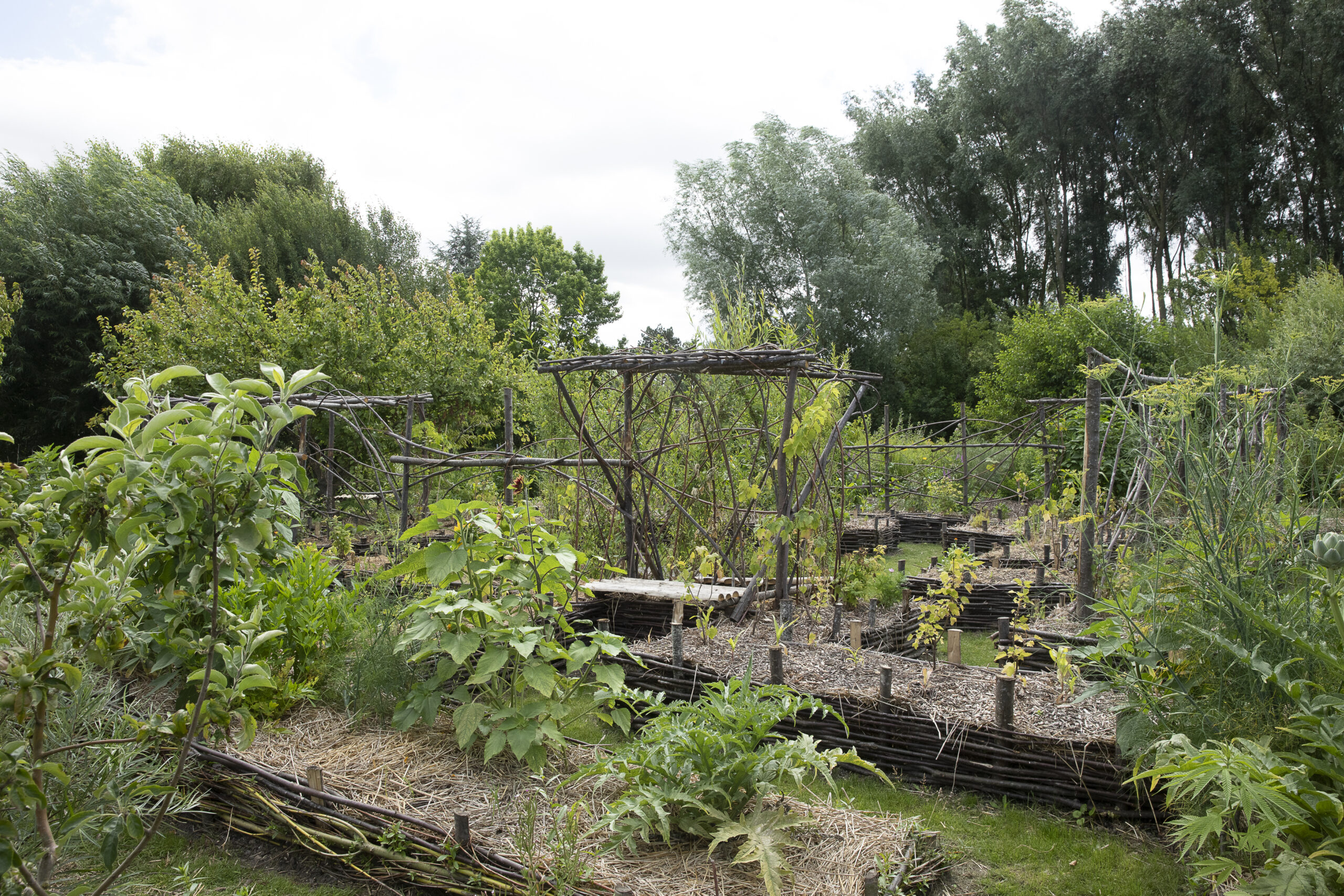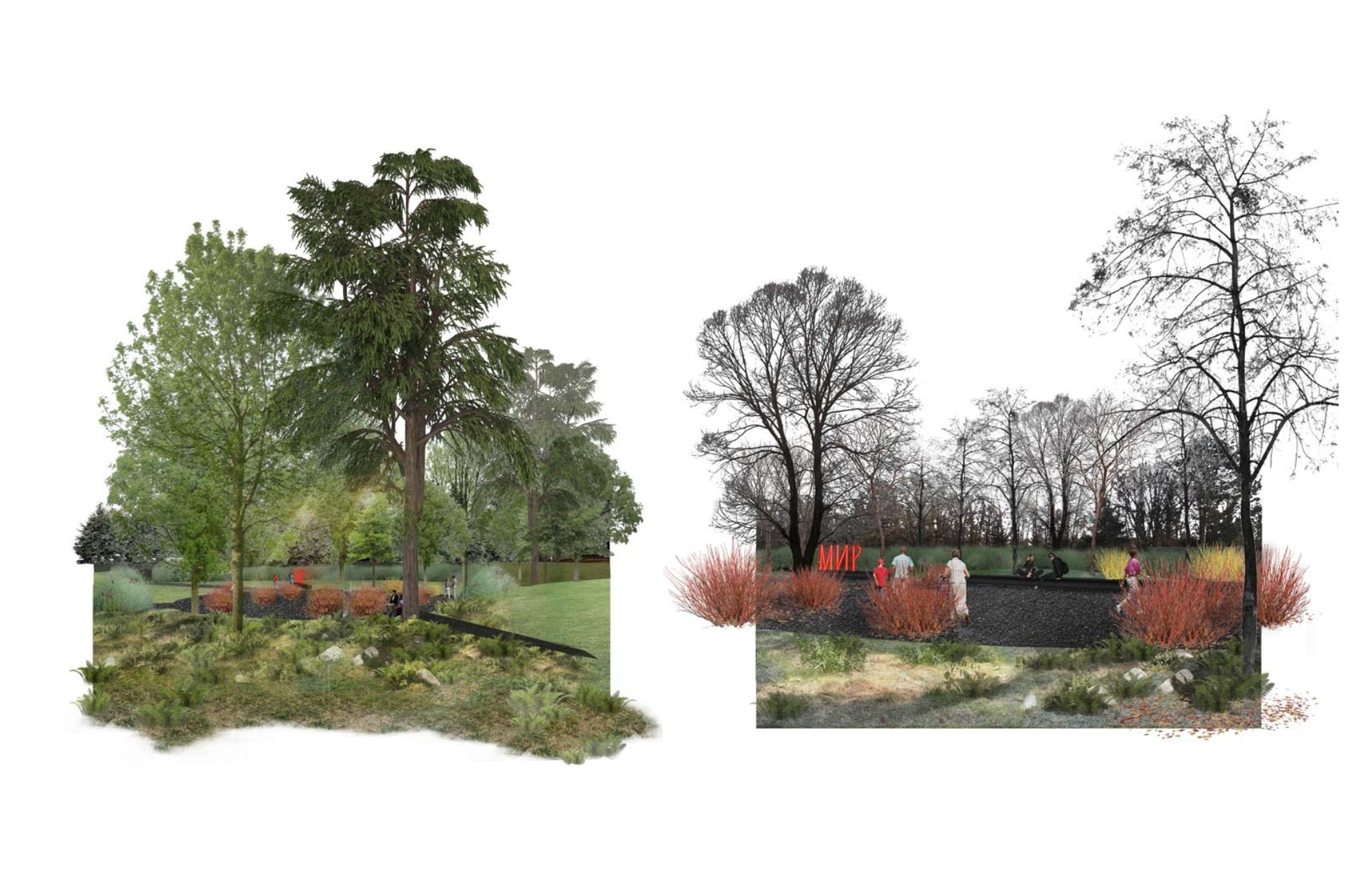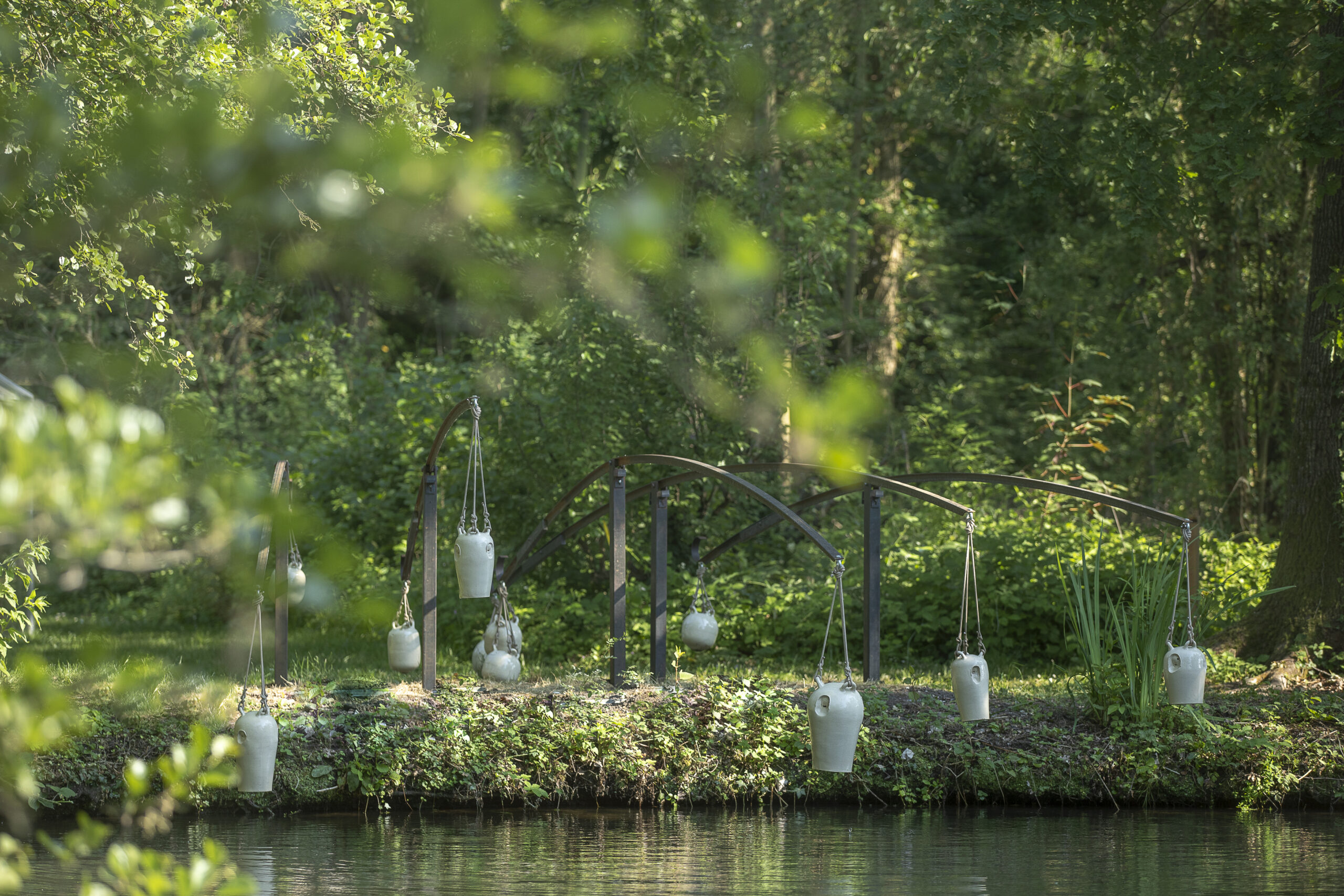
Baptiste Gérard-Hirne, Emma Morillon et Mathilde Rouch ©Yann Monel
Today, Hortense welcomes her son and grandchildren to the Hortillonnages for a family Sunday. As they arrive by boat near her plot, the thick mud makes navigation increasingly difficult: these decomposing plants lining the river bed gradually eat away at the inches of water…
During the day, Hortense’s son expresses regret to her: when they came by boat this morning, his children still couldn’t find the way to their grandmother’s island. They see the Hortillonnages as a real water maze and haven’t learned to read between the lines of the plants. This saddens him deeply, as he is the son of several generations of horticulturists.
Seeing his distress and difficulty in passing on his knowledge, Hortense begins to think…
Her gaze falls on a mass of mud deposited on the bank after the dredging of the canals. The youngest children play in it, and Hortense sees this invasive material as a resource.
She decides to valorize it in a playful way: inspired by the orthogonal layout of the canals, she constructs a human-scale vegetal labyrinth on her plot to help her grandchildren orient themselves.
She creates regular mounds with a mixture of mud, straw, chips, and soil, which serve as the foundation for the labyrinth and as fertilizer for the plants.
The further she progresses towards the center of the maze, the more her mounds are worked and built. The local species she sows there also evolve, ranging from woody plants on the edges of the maze to perennial plants and finally to vegetable species in the center. This great diversity allows her grandchildren to be initiated into recognizing plants.
The following season, they discover with great enthusiasm this new game, which also reminds them of the one on the floor of Amiens Cathedral. A kind of mirror between places of worship and culture, with water at its heart.



